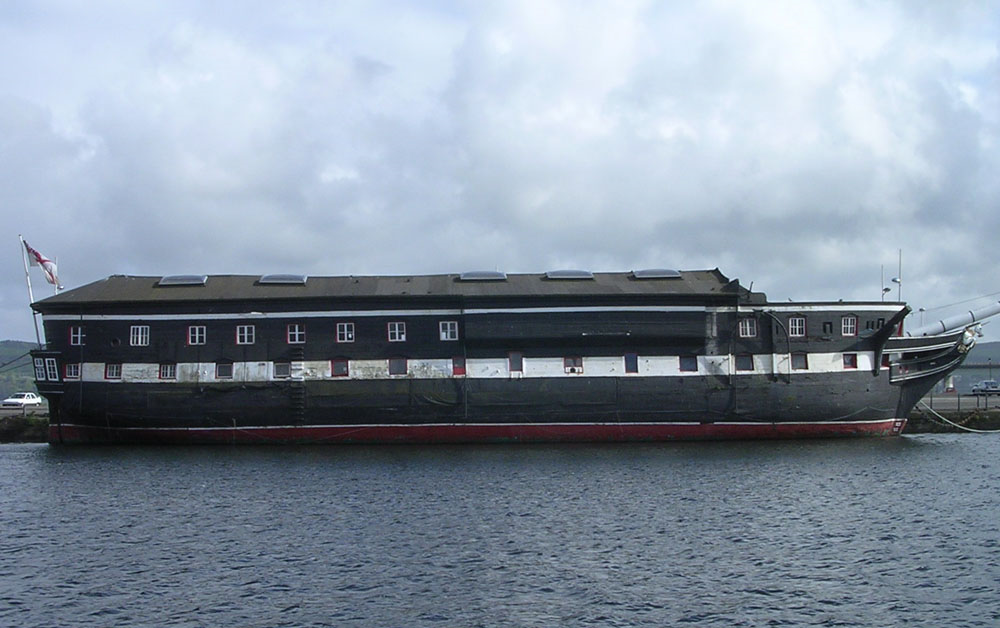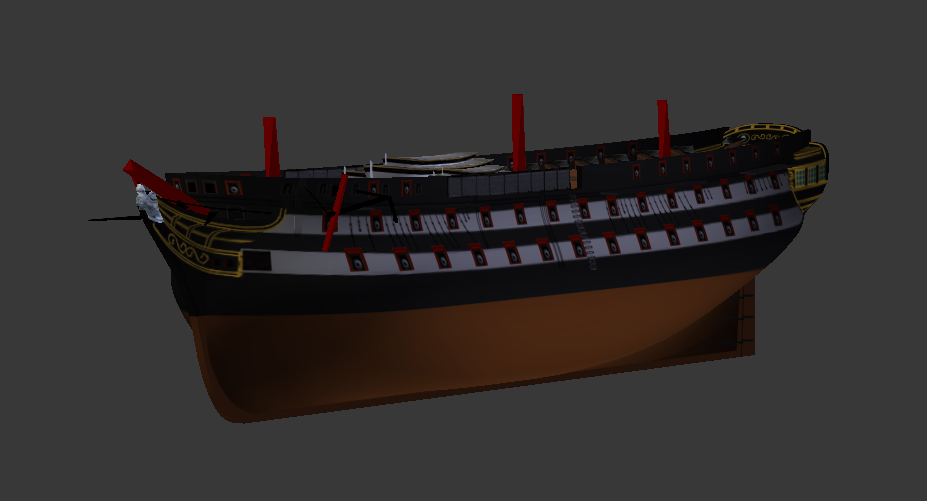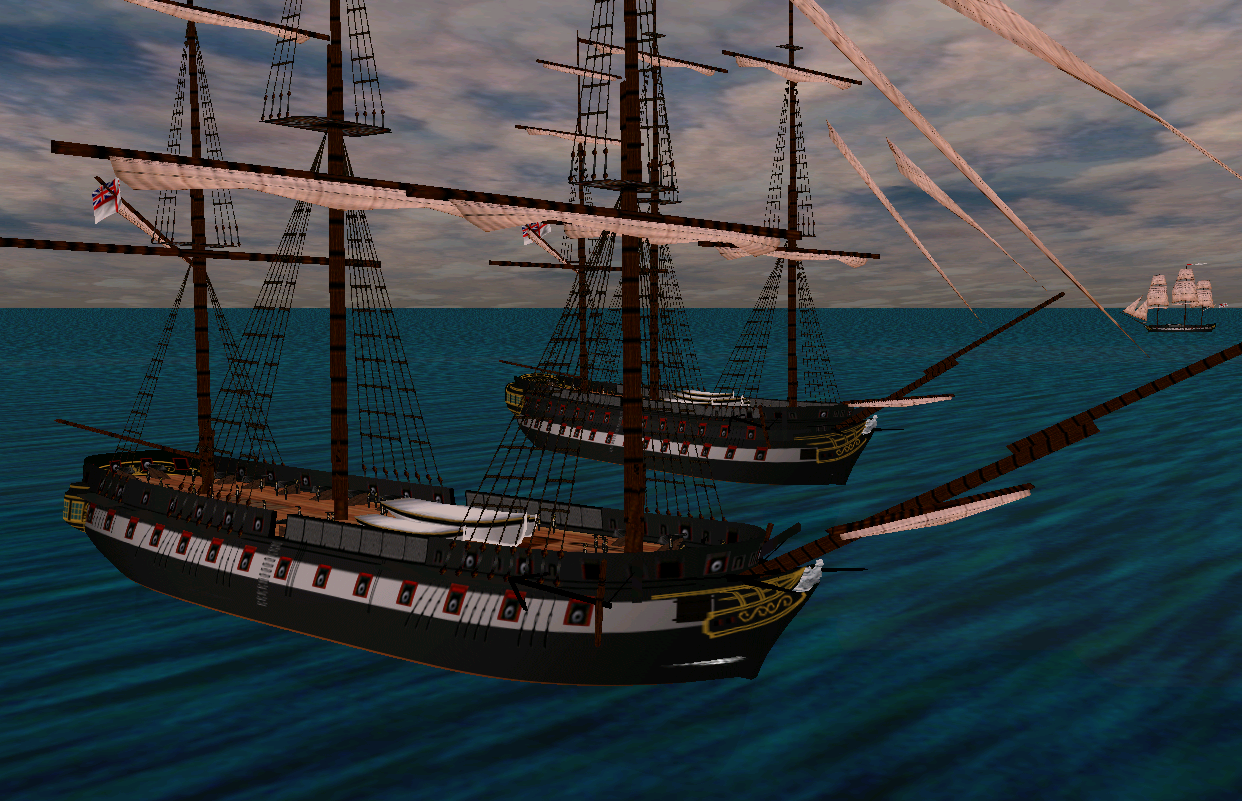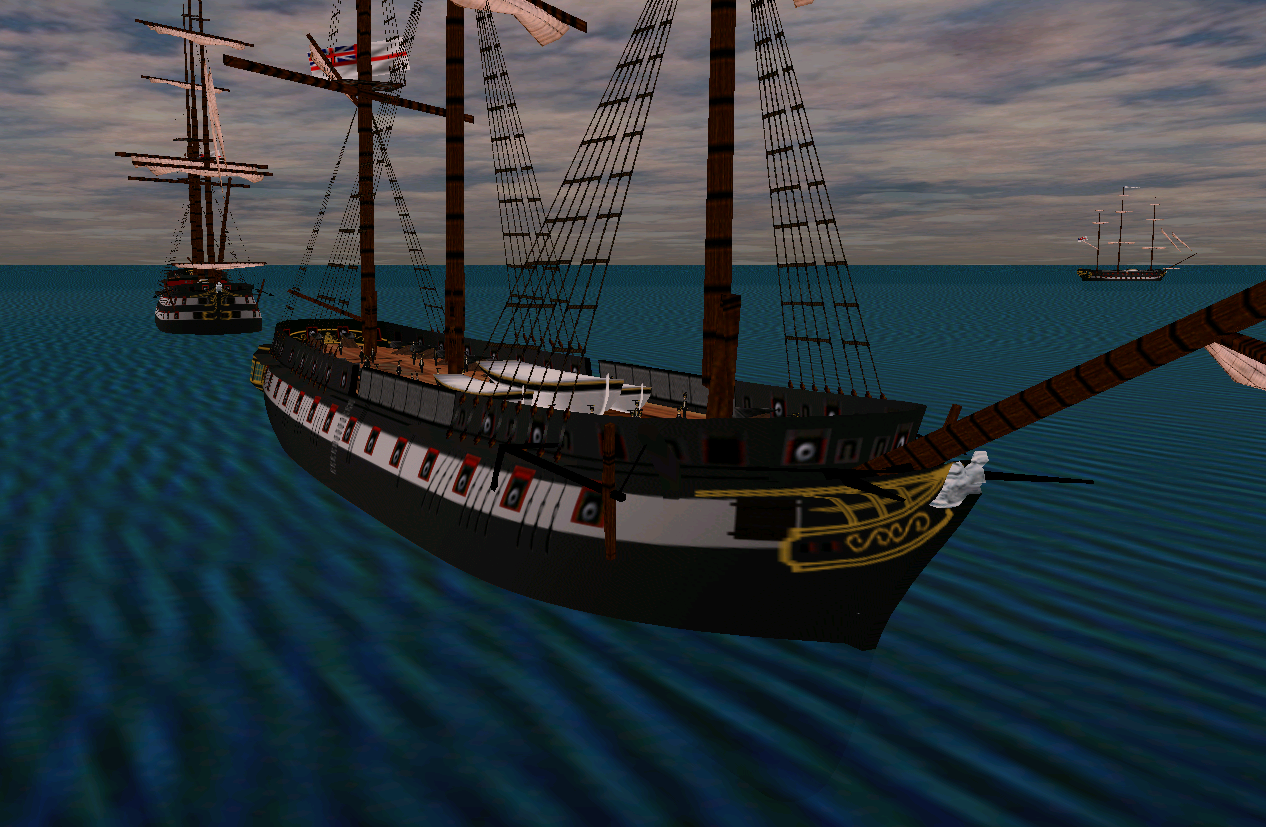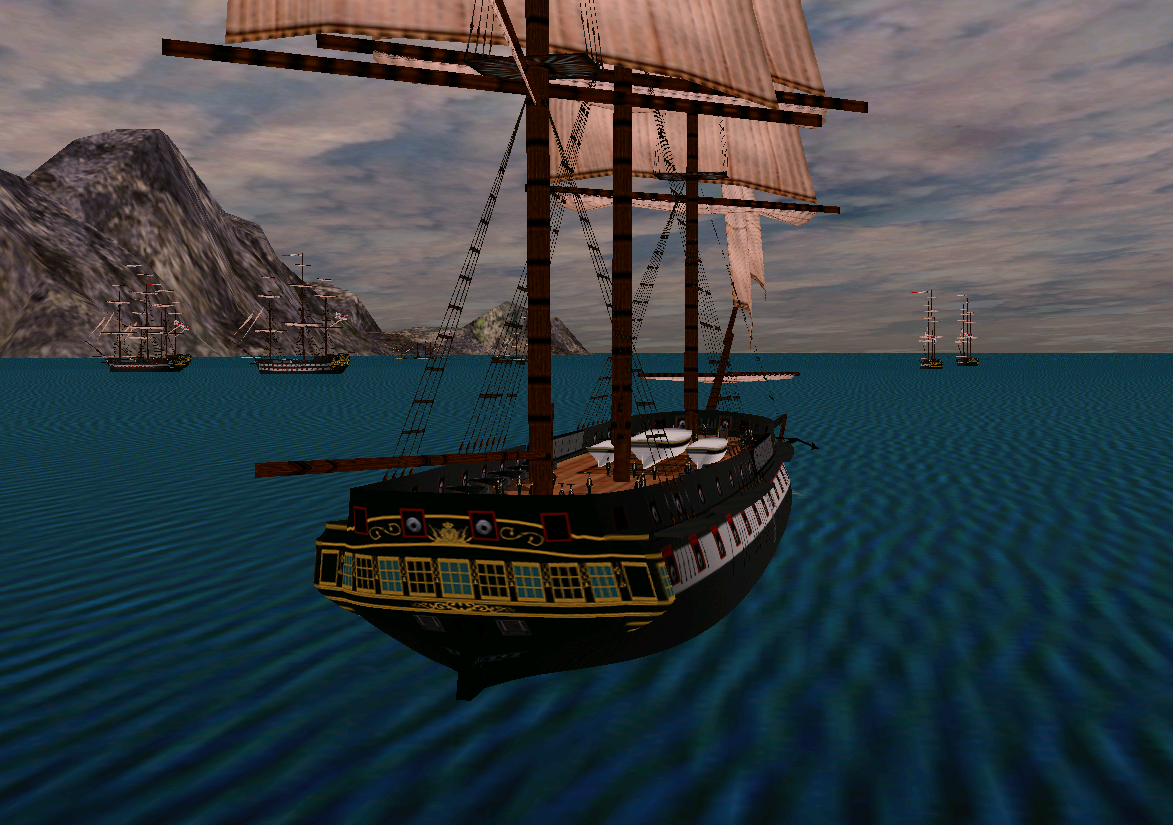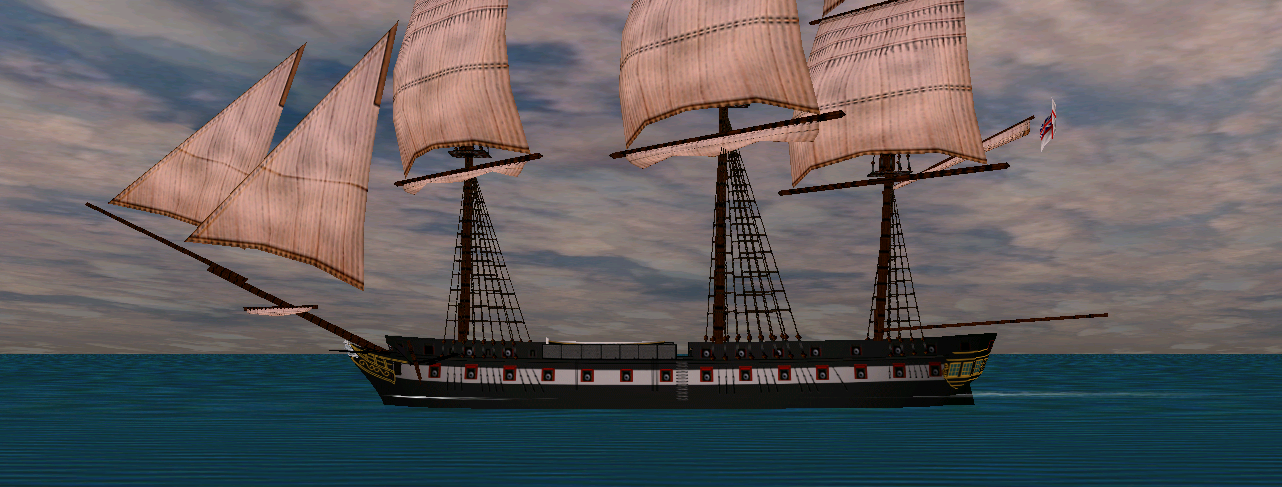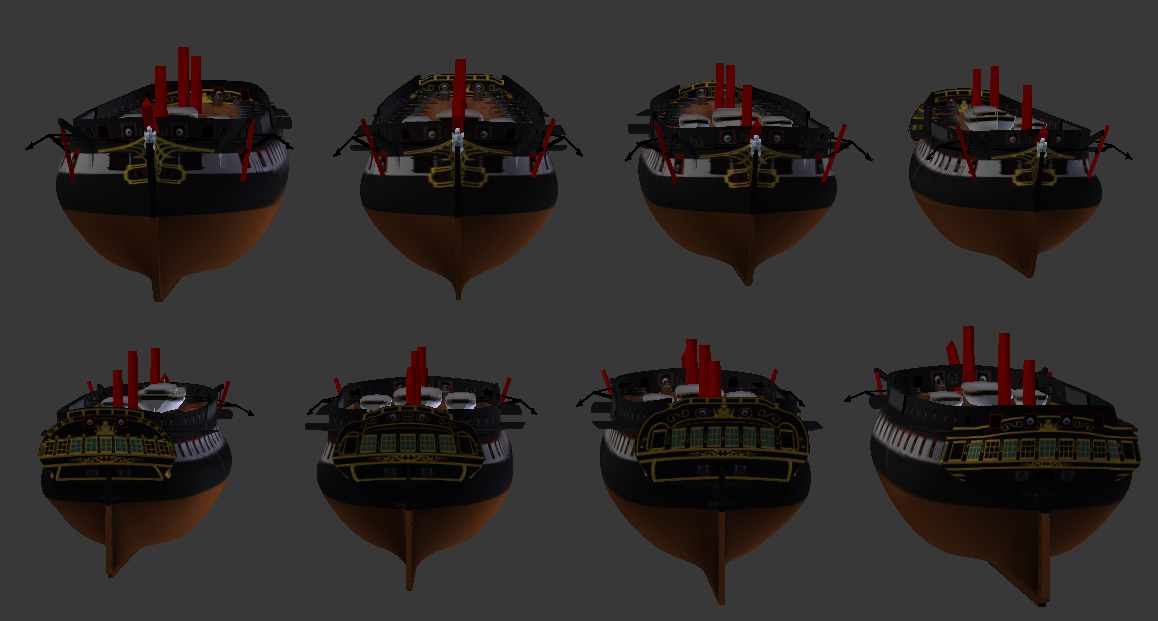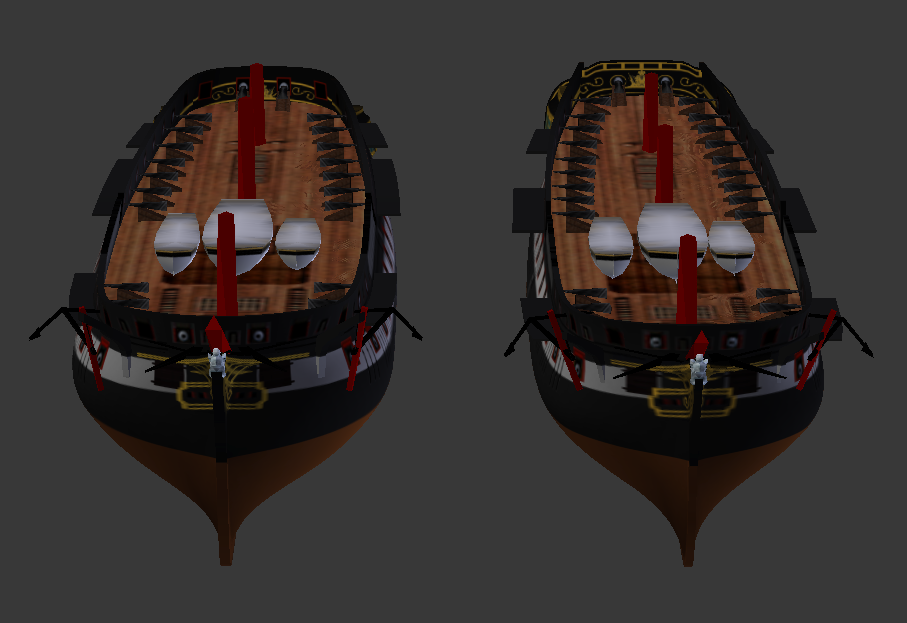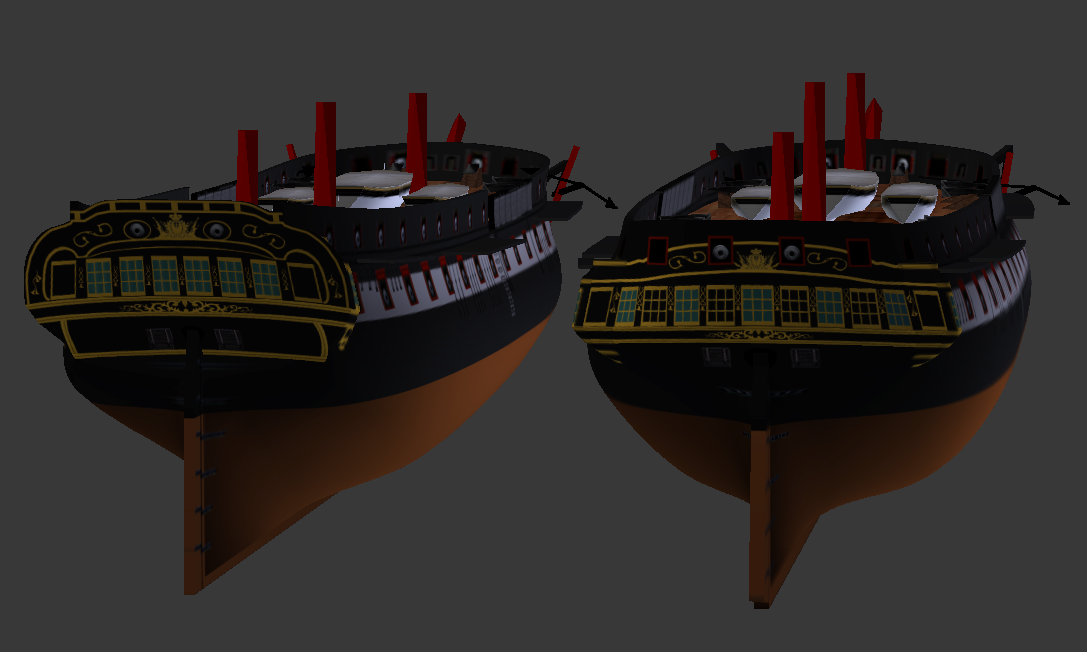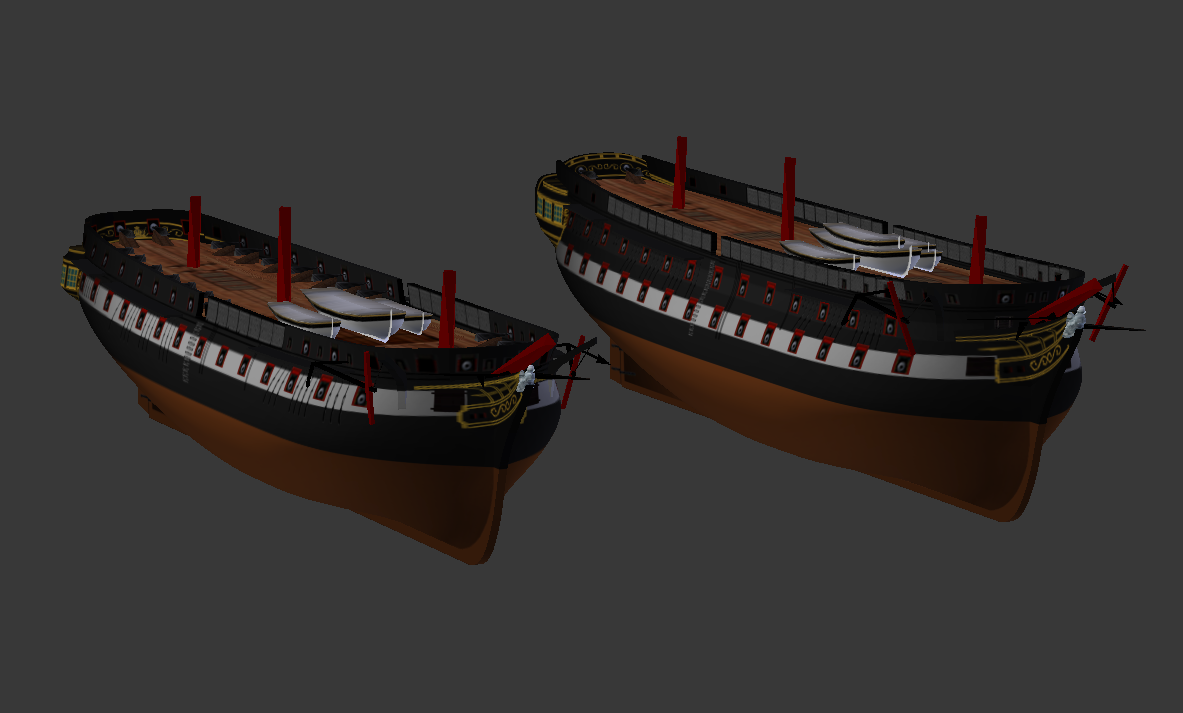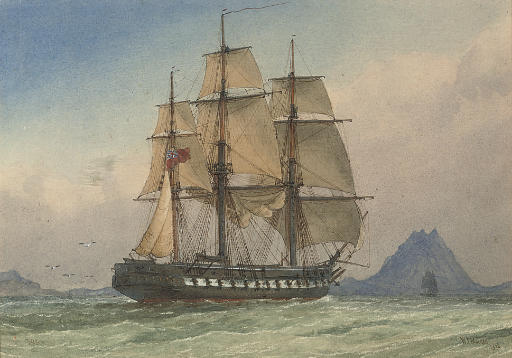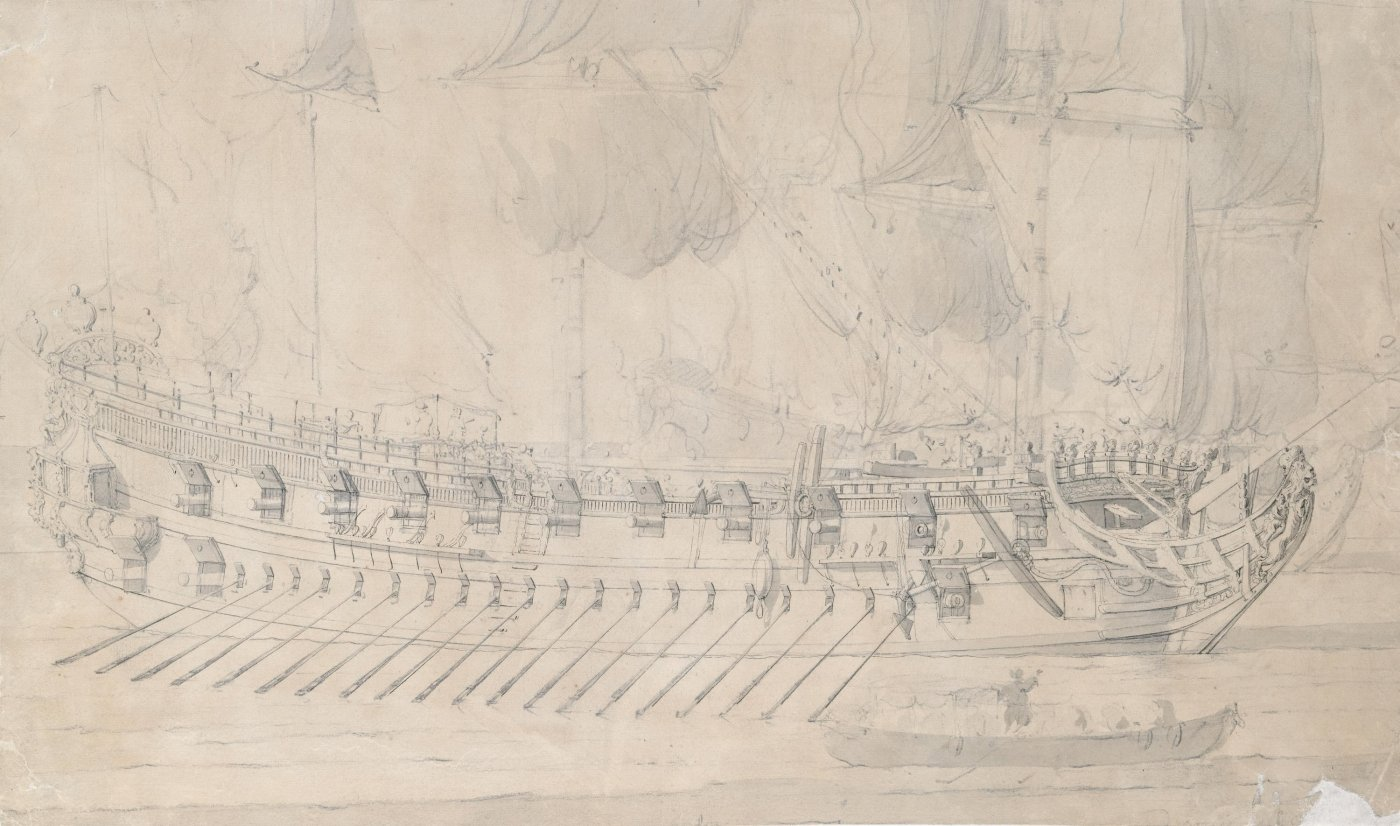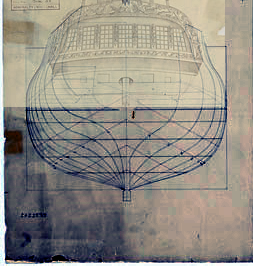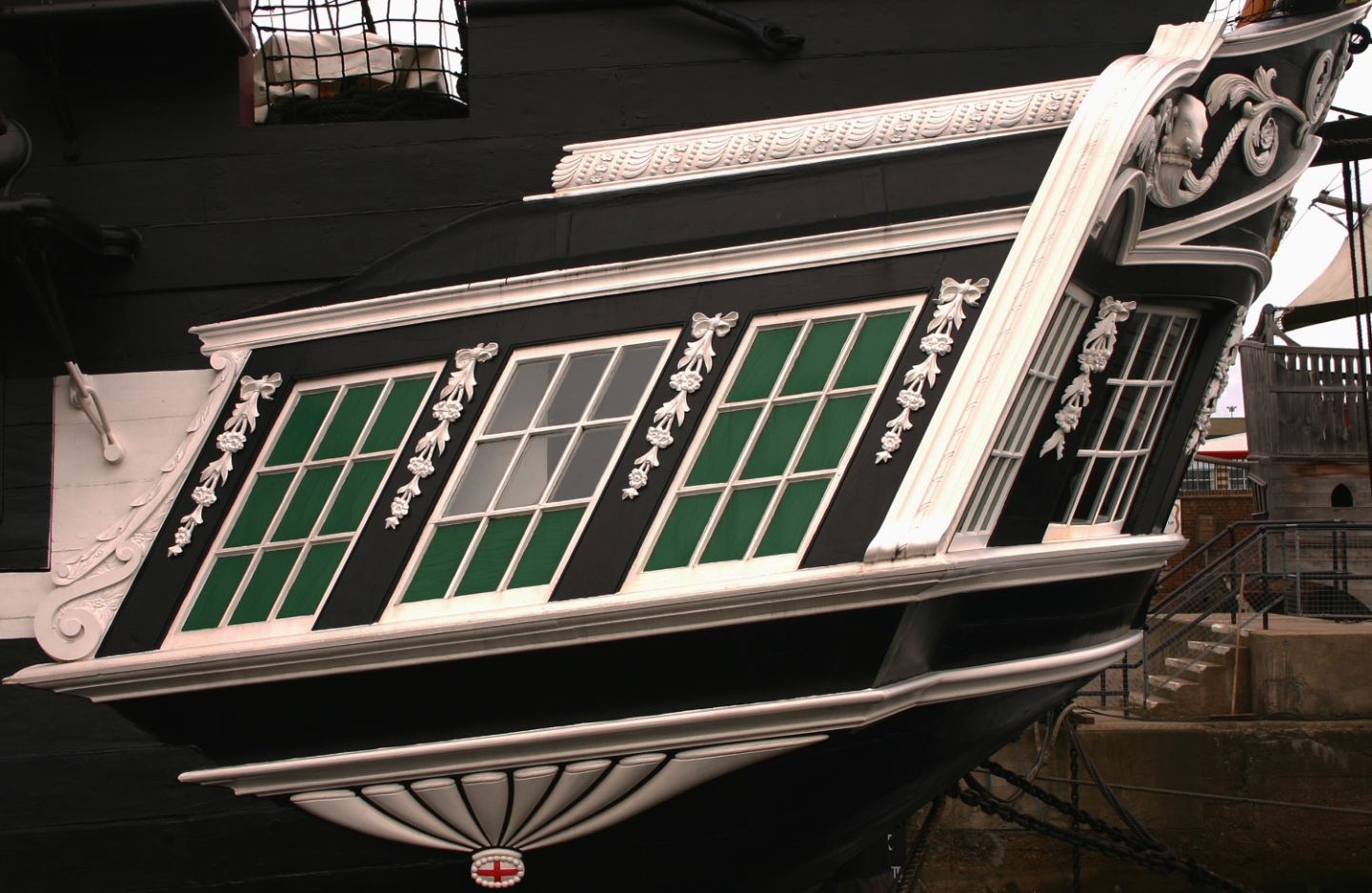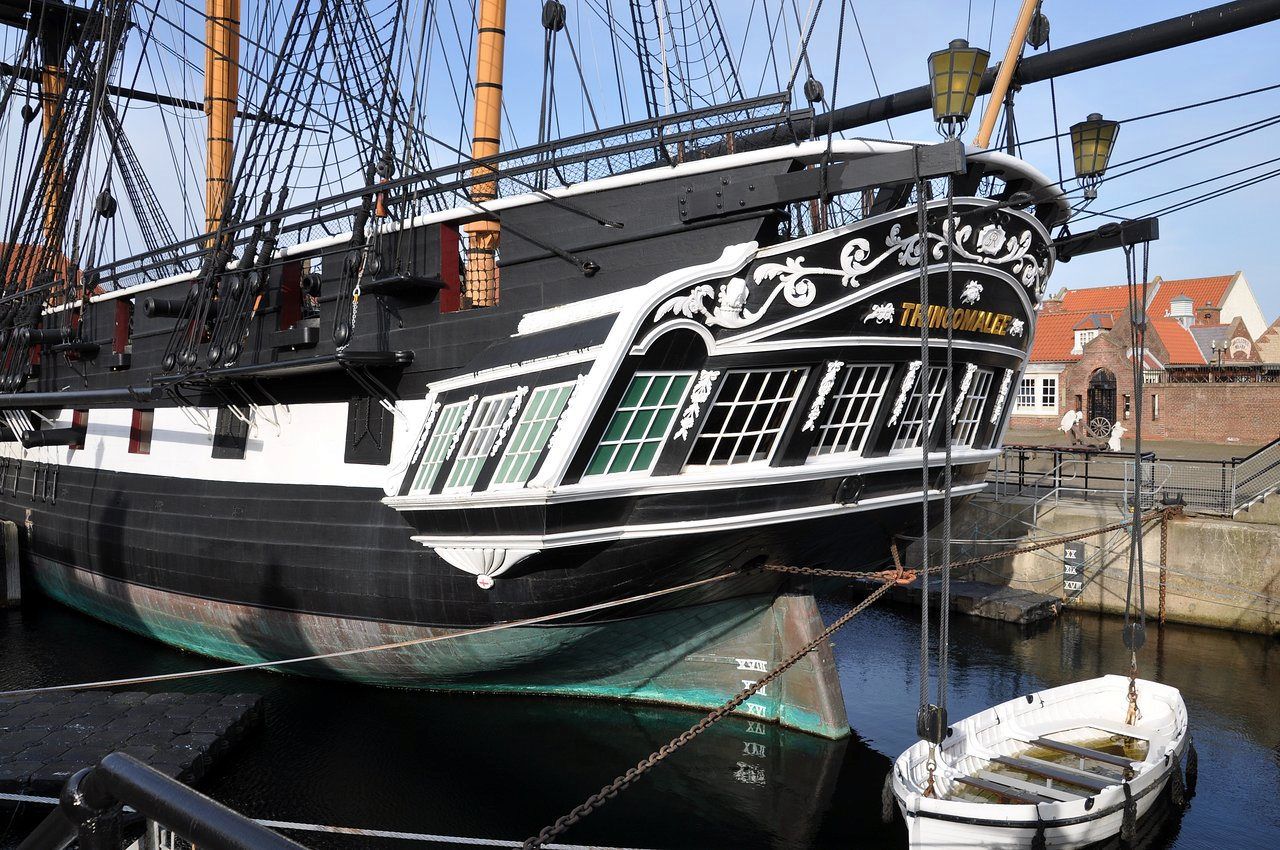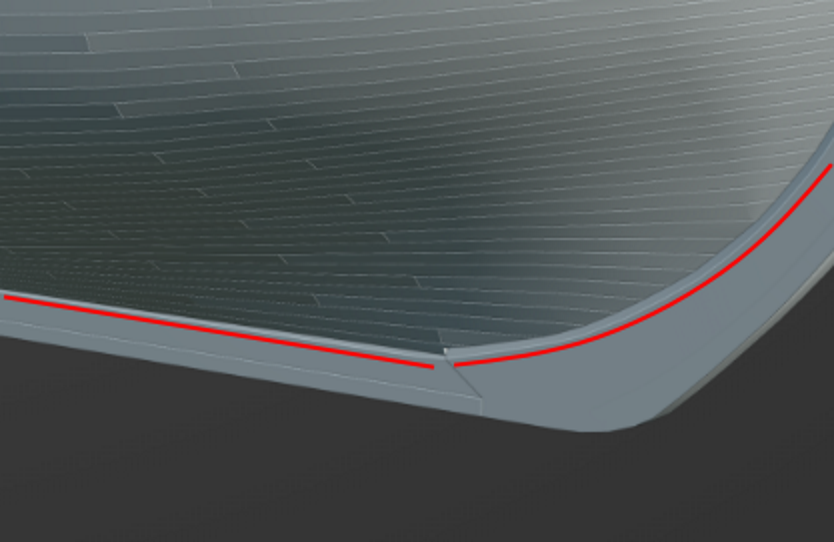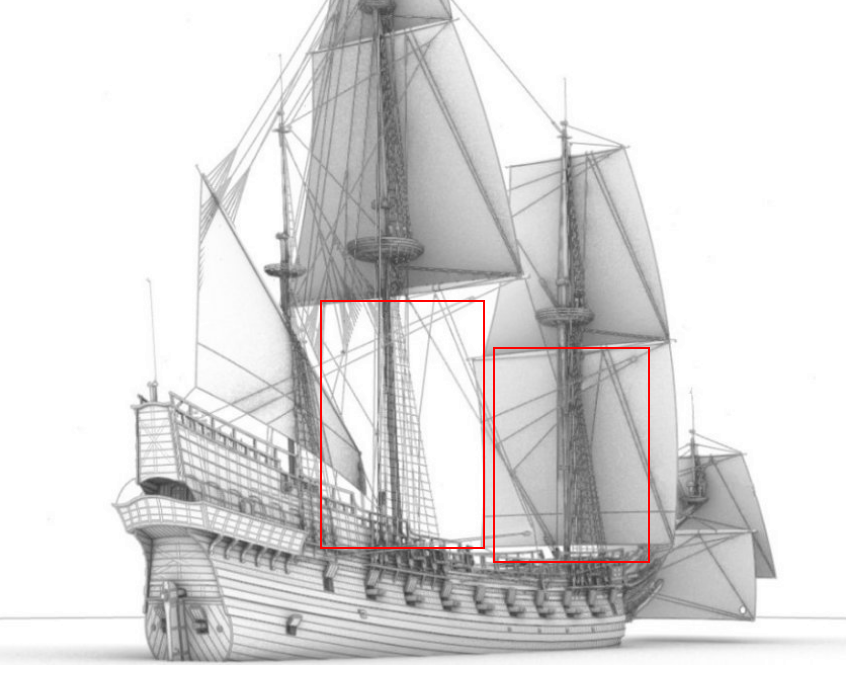-
Posts
973 -
Joined
Content Type
Profiles
Forums
Gallery
Events
Everything posted by Martes
-
Nate, First of all, thanks, I am very glad you like them Remember, I deal with a very specific game, which is extremely old and imposing a number of not very obvious restrictions, so everything I do is somehow directed to circumvent those restrictions and still get aesthetically pleasing result. The rule is 1 object -> 1 material -> 1 texture. Multiple objects can share a material (and the texture), but an object cannot contain more than one and a material cannot reference more than one texture. The game can substitute the textures under certain conditions at runtime (config file sets the paint schemes for different navies and damage textures). Also, I have to be very careful with order in which the objects are processed during export. This order is used by the game engine (which is OLD and based on DirectDraw, not even Direct3D) to determine which object will obscure all the others if it is visible. If I place the deck after the hull, for example, it will poke through when rendered. This imposes a limit on the number of objects, their placement and the number and structure of the textures. Obviously, there are no normal maps or anything like it. Everything is just drawn as is, including shadow to give the hull a bit of volume. But then, when you look at a ship from any distance, you won't see any planking details or anything like that under the thick layers of paint that usually covers the hull. I more or less used the Unicorn for the paint basic scheme And to make any modification relatively easy, the I mostly use "project from view (bounds)" on the hull and the stern, since that allows to move the vertices around as much as I want and quickly reapply the texture (which is, essentially, a painted side or stern view of the ship) afterwards - as long as the limits of the bounding rectangle remain the same. What I am not sure is if any of those tricks can be useful for more modern environment, but they definitely work for me.
-
To emphasize the sense of scale: 74-razee, Egyptienne, Liffey, Belle Poule. Keep in mind that Liffey was considered large for a frigate, and was already carrying 24pdr battery. Belle Poule is admittedly small (although, again, for her time she was also relatively large and several similar ships were rearmed with 18pdr guns against original 12pdrs in British service), and what I miss here is the "standard" 38 (18pdr) - that would be the Virginie when I finally get around to rebuild her. And don't let the decorations and raised heads fool you - all of them are still French hull forms.
-
Colossus, being built to the lines of the Courageux of 1753, is also sufficiently French in that regard. They are both relatively sharp at the entry (quite unlike the absolutely French ships by Forfait, but we'll leave that at the moment), but the difference is in absolute values, of course. She's simply narrower at 43' 8" against 48" breadth of the 74 (and the razee), with only 2.5 feet difference in length and that shows. After all, she was built for 24-pounders and speed, not 32/36 pounders and standing in the line of battle.
-
HMS Victory Renovation - Outer Planking Removed
Martes replied to Steve20's topic in Nautical/Naval History
Curiously, Lambert (Last Sailing Battlefleet) mentions that certain group from Rochefort seems to have succeeded to assemble necessary funds to keep her, but then the Admiralty got cold feet about returning her to France and said she won't survive being towed cross-channel. Well, she didn't, explosive charges made sure of it. -
One of the things that constantly amuse me is when somebody compares L'Egyptienne to a 74-razee. Yes, they are (more or less) of the same length. But you can't mistake one for another (and not because of the stern): L'Egyptienne (top right, bottom left) is much slimmer, her hull long and narrow, compared to the round bulk of the cut down 74-gun ship.
-
The next logical step in exploiting the hull of the Colossus is to razee it completely, creating a regular - if very, very heavy - frigate. As those conversions took place after 1815, almost all the ships were fitted with this or that variant of round stern, and they all were different, so I had to choose one of them, which certainly wasn't easy. You may note that some of the stern lights are actually shut and fitted with faux-windows, and the glassed ones could have served as additional gunports, except the central one, where the rudder head is located. But it was very, very difficult to choose between this variant, with smaller, 2-window quarter galleries and the more traditional with 3 windows, but in the end I went for this one as slightly more exotic, but still pleasing the eye, as far as this arrangement can. For stern reference, I used the the plan for the Vindictive. Anyway, the closest ship to my interpretation was the Grampus (ex-Tremendous), which was originally almost completely similar to the Colossus. And I am not nearly done with this hull.
-
There is a plan in RMG collection (it is probably a later, 18th century copy or a reconstruction, but that's the closest you can get): https://prints.rmg.co.uk/products/lines-plan-for-vessel-charles-galley-1676-j6899 And a couple of portraits by Van de Velde:
-
USF Confederacy in 3D | Blender
Martes replied to 3DShipWright's topic in CAD and 3D Modelling/Drafting Plans with Software
It is also probable, that parts of the side windows would be shut as on Trincomalee above, to provide some privacy to the galleries And the same with the stern windows, as maybe they would have moved the usual settee from the stern to enjoy the view, but there is still the box of the rudderhead to fit in the center. On a side note, what is quite peculiar, that the her hull lines look neither British, nor French. They appear to be strongly influenced by F. H. af Chapman's "Architectura Navalis Mercatoria" and his "Treatise on shipbuilding". Technically this is entirely possible (the books were published in 1768 and 1775), but very interesting nevertheless as to the why and how was this style chosen, being quite the cutting edge of ship design at the time.- 107 replies
-
- Frigate
- Confederacy
-
(and 1 more)
Tagged with:
-
USF Confederacy in 3D | Blender
Martes replied to 3DShipWright's topic in CAD and 3D Modelling/Drafting Plans with Software
Fitting the lines and the stern on the original plan (low-res as it is): you can see that the last line replicates the frame of the transom and all the way up to the taffrail. This line is not vertical if viewed from the side, but represents the aftermost edge of the hull framing. I marked the tentative positions of the door and the seat of ease in blue, with green marking the level of the deck. The window, as you can see, is clearly crossed by the hull and thus is definitely dummy, French style.- 107 replies
-
- Frigate
- Confederacy
-
(and 1 more)
Tagged with:
-
USF Confederacy in 3D | Blender
Martes replied to 3DShipWright's topic in CAD and 3D Modelling/Drafting Plans with Software
It is very, very unlikely. I am not aware any ship at that time would be built like that - this renders the gallery unusable, after all.- 107 replies
-
- Frigate
- Confederacy
-
(and 1 more)
Tagged with:
-
USF Confederacy in 3D | Blender
Martes replied to 3DShipWright's topic in CAD and 3D Modelling/Drafting Plans with Software
that is. I am not sure if those windows overlap with the ship framing (on some French ships they do), but quarter galleries usually did not have open windows to the stern. Diana Trincomalee L'Africaine - note how the dotted contour of the frame crosses the second window and the position of the door inside. There were different manners of decorating the places where those windows would be, from putting dummy window frames or wooden blinds to various decorations there, but since the plan shows framed window, so it should be.- 107 replies
-
- Frigate
- Confederacy
-
(and 1 more)
Tagged with:
-
USF Confederacy in 3D | Blender
Martes replied to 3DShipWright's topic in CAD and 3D Modelling/Drafting Plans with Software
These two stern lights (windows) were usually dummy, the framing there is purely decorative with no glass:- 107 replies
-
- Frigate
- Confederacy
-
(and 1 more)
Tagged with:
-
USF Confederacy in 3D | Blender
Martes replied to 3DShipWright's topic in CAD and 3D Modelling/Drafting Plans with Software
I am not sure if it would help, but while I was working on the Indy, I had a specific problem rotating the gunport lids and found (hell if I remember how I did that) a way to put a rotated local axis into the object, align it with the edge of the gunport, and then rotate the lid about this axis. For the Indy, by the way, I tried to produce the outer shell using Lattice, of all things, and then make manual corrections, but that proved to be in some way even less convenient than just do it by hand from scratch. But then I don't have to cut the resulting model to individual planks.- 107 replies
-
- Frigate
- Confederacy
-
(and 1 more)
Tagged with:
-
USF Confederacy in 3D | Blender
Martes replied to 3DShipWright's topic in CAD and 3D Modelling/Drafting Plans with Software
So for this method to work you need to fulfill two requirements: that your initial run of the vertices and edges should coincide with the planking plan and distances and to be sure that the Solidify would give a correct offset. However be careful. It may be very well possible that since Blender 2.79 that I use the Solidify operator has been improved with it's results on complex surfaces, but my results with it, when I attempted to reproduce the surface of the frames and then extend it to planking was very unsatisfactory, especially around the bow and I had to revert back to manual editing (see my first post about the latest iteration of the Colossus). I find it very useful to keep a "water" object, to be able to verify the smoothness of the waterlines so that more or less all intersections of the hull with it would not produce sudden angled surfaces. Also, take a look at what happens around your keel. There should be no dent there. This is exactly the position the planking edge should touch the keel.- 107 replies
-
- Frigate
- Confederacy
-
(and 1 more)
Tagged with:
-
USF Confederacy in 3D | Blender
Martes replied to 3DShipWright's topic in CAD and 3D Modelling/Drafting Plans with Software
Is there some automatic process you use to generate the planking, or it is done manually?- 107 replies
-
- Frigate
- Confederacy
-
(and 1 more)
Tagged with:
-
I think it's purely rendering issue. For some reason the program tries to blend the edges of the objects with background color. If it is very bright, some details can go missing, and ropes appear thinner. Probably may be fixed with antialiasing settings, but much easier to give some background like that paper style you posted earlier, or hard black against white. Don't dwell on it.
-
The ropes are thin and likely look something like that from a distance, but in this post: https://modelshipworld.com/topic/31638-„święty-jerzy”-„sankt-georg”-1627-–-reconstructing-an-opponent-of-„vasa”/?do=findComment&comment=975528 they looked more or less all right. I suppose you have to have some kind of world background for the ropes to show normally, since the very last pictures displays the ropes that are shown against the sails and those that are not differently:
-
In fact, it depends on three factors. First is the weather. The water is less and less transparent as the wind rises. Second is the presence of a sea bottom mesh and it's color. They do not appear on all maps, but here nice and not very deep sand is present. And third is somewhat connected to camera angle and wind direction. I tried once to make maps for this game, it's technically possible, just very inconvenient, because the terrain mesh should be separated from underwater mesh exactly at z=0, and if a single vertex from the land mesh or a single vertex of sea bottom mesh crosses this line, the scenario crashes on load. It is also somehow possible to place buildings, cities and forts (the game contains appropriate models) on the maps, but I did not go that far. Another relatively practical solution that I have seen on several maps included in the game is that the land mesh is regular, while the underwater mesh is simply a plane with painted features (and corresponding map zones as described below). The "path" object denotes the land collision edge that has to be separately created (and are particularly difficult to generate), "anchor" allows ships to drop anchor, and "shoal" can have limited depth set in scenario editor and thus strand ships that are deeper than this value. The sea, however, is done quite ingeniously, especially for so early engine (1999 or 2000, IIRC) - it is, in fact, a combination of two flat semi-transparent surfaces that have different textures running in different directions, creating a very convincing illusion of moving water. In general, I would love to introduce some accurate geographical scenery into the project, but, again, probably it's better (and easier) could be done in Unity. If only I had the time.
About us
Modelshipworld - Advancing Ship Modeling through Research
SSL Secured
Your security is important for us so this Website is SSL-Secured
NRG Mailing Address
Nautical Research Guild
237 South Lincoln Street
Westmont IL, 60559-1917
Model Ship World ® and the MSW logo are Registered Trademarks, and belong to the Nautical Research Guild (United States Patent and Trademark Office: No. 6,929,264 & No. 6,929,274, registered Dec. 20, 2022)
Helpful Links
About the NRG
If you enjoy building ship models that are historically accurate as well as beautiful, then The Nautical Research Guild (NRG) is just right for you.
The Guild is a non-profit educational organization whose mission is to “Advance Ship Modeling Through Research”. We provide support to our members in their efforts to raise the quality of their model ships.
The Nautical Research Guild has published our world-renowned quarterly magazine, The Nautical Research Journal, since 1955. The pages of the Journal are full of articles by accomplished ship modelers who show you how they create those exquisite details on their models, and by maritime historians who show you the correct details to build. The Journal is available in both print and digital editions. Go to the NRG web site (www.thenrg.org) to download a complimentary digital copy of the Journal. The NRG also publishes plan sets, books and compilations of back issues of the Journal and the former Ships in Scale and Model Ship Builder magazines.



